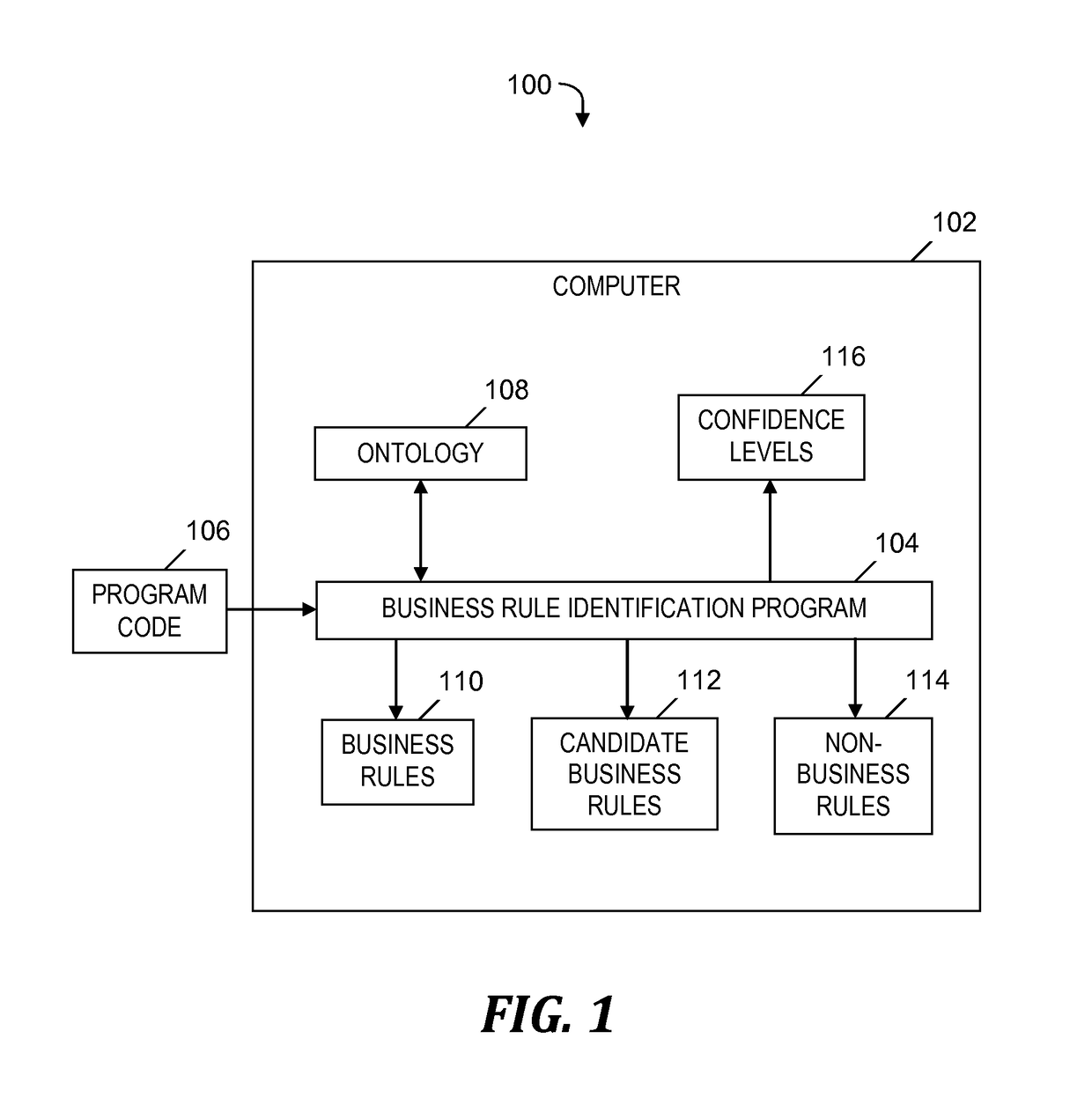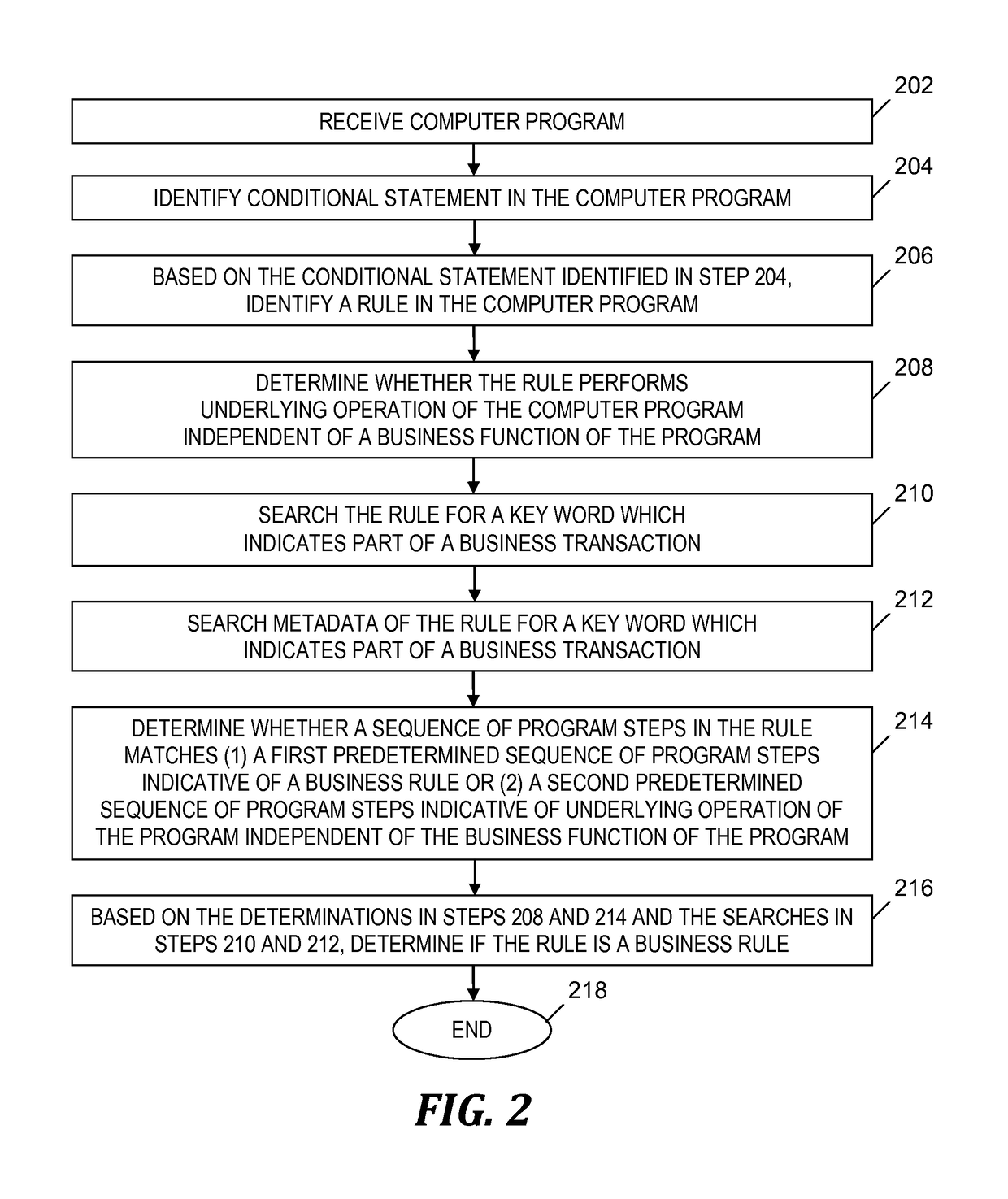Ontology-aided business rule extraction using machine learning
a machine learning and business rule technology, applied in the field of extracting business rules, can solve the problems of insufficient sizing of the subsequent business rule extraction phase, high cost of human experts' further work to eliminate those candidates on the list that are not actual business rules, and time-consuming manual process, etc., to achieve the effect of reducing the cost of extracting and identifying actual business rules in an application modernization effort, accurate and precise list, and reducing the cost of sizing a subsequent business rul
- Summary
- Abstract
- Description
- Claims
- Application Information
AI Technical Summary
Benefits of technology
Problems solved by technology
Method used
Image
Examples
Embodiment Construction
Overview
[0012]Embodiments of the present invention identify business rules (e.g., how many licensees are permitted to use a program, pricing, delivery date or payment terms for a product or service, return policy for a product or other aspects of a business transaction with a customer of the business) in program code using natural language processing (NLP)-based probabilistic modeling techniques and machine learning (ML) techniques, while filtering out non-business rules for the underlying operation of the program independent of the business function of the program (e.g., error checking, data validation, data logging, parameter cleanup, reserving memory, buffer setup, standard utilities, reports and system routines). In one embodiment, the probabilistic modeling techniques include Bayesian classification models to assign confidence levels to respective candidate business rules extracted from program code. Based on feedback from human practitioners who determine whether candidate bus...
PUM
 Login to View More
Login to View More Abstract
Description
Claims
Application Information
 Login to View More
Login to View More - R&D
- Intellectual Property
- Life Sciences
- Materials
- Tech Scout
- Unparalleled Data Quality
- Higher Quality Content
- 60% Fewer Hallucinations
Browse by: Latest US Patents, China's latest patents, Technical Efficacy Thesaurus, Application Domain, Technology Topic, Popular Technical Reports.
© 2025 PatSnap. All rights reserved.Legal|Privacy policy|Modern Slavery Act Transparency Statement|Sitemap|About US| Contact US: help@patsnap.com



